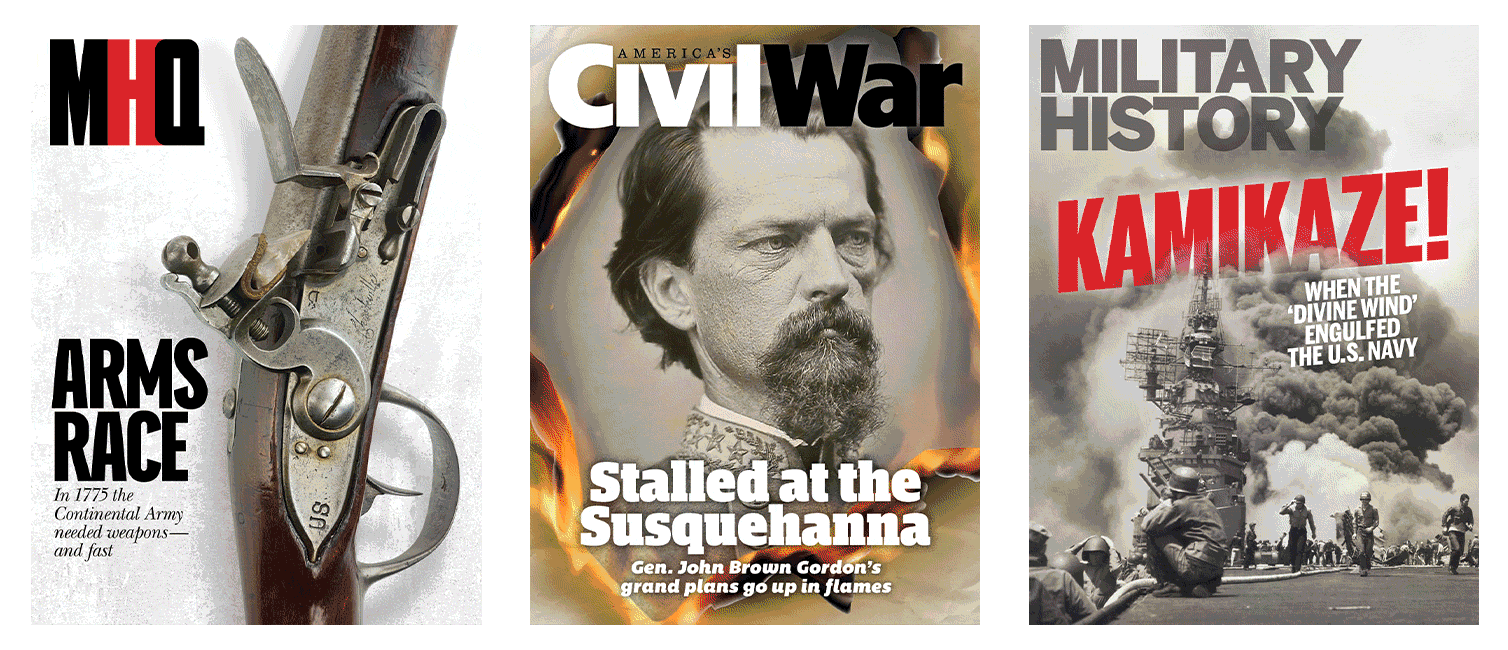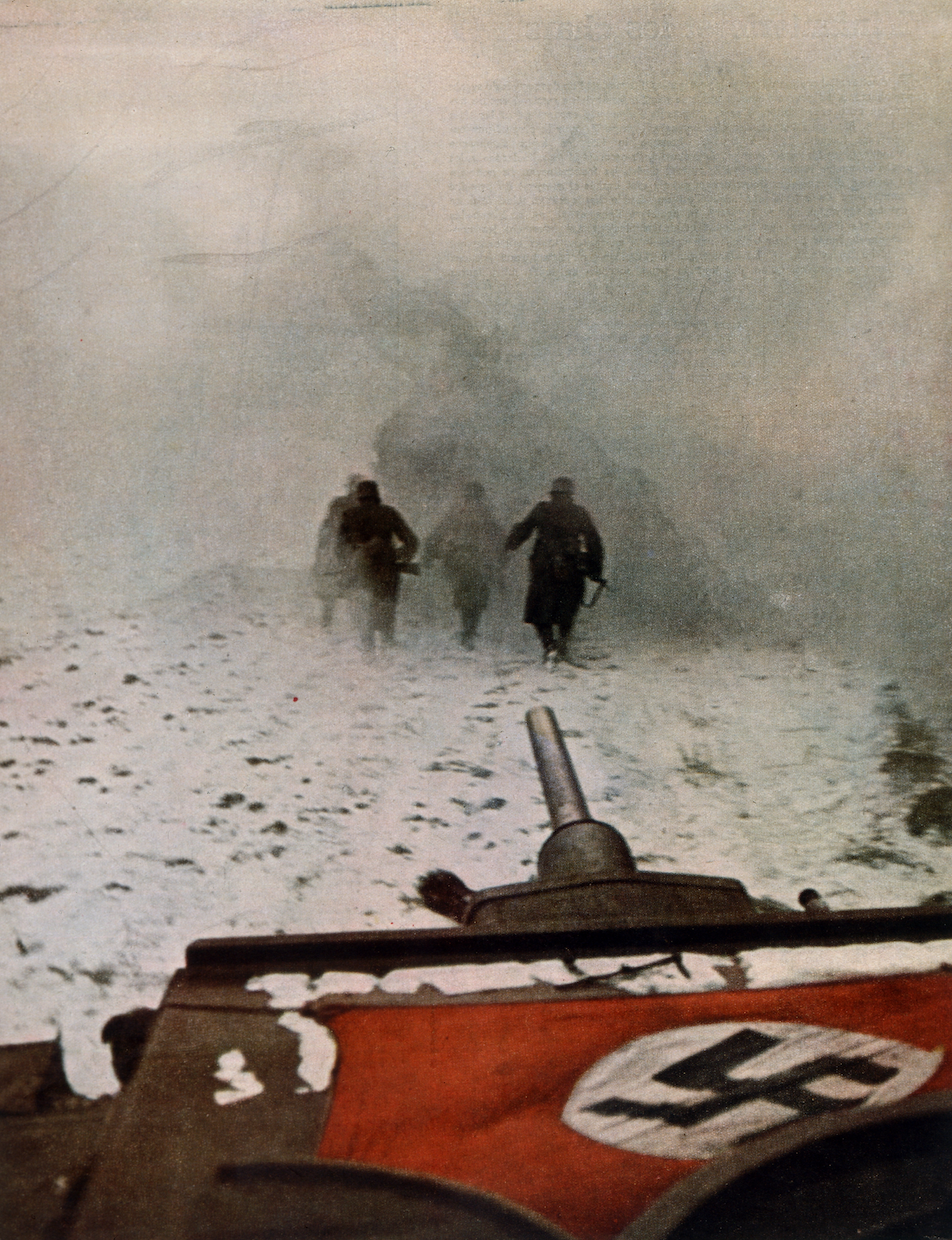On June 24, 1812, Napoleon Bonaparte and his Grande Armée crossed the Neman River beginning what was soon to be a fateful — if not cataclysmic — invasion of Russia.
Almost 129 years to the day, Germany began its own campaign into the Motherland, finding, like so many others before it, that the road to Moscow was, and almost always is, paved with frostbite, starvation and skulls.
Both sides fought with a “demonic fury,”according to The National WWII Museum, that resulted in the death of over 2 million German soldiers and over 24 million Soviet soldiers and civilians.
The battle for the Soviet heartland bogged down Germany in a way that it had desperately hoped to avoid. The debate, therefore, is rooted in the most important question when it comes to any invasion of Russia: Why?
Why did Adolf Hitler choose to invade the Soviet Union when surely the Führer saw that it was a calamity waiting to happen?
Why did he invade when history showed the margin for success was minimal whereas failure precipitated ghastly consequences?
Historians have been grappling over that question for decades.
WHY DID HITLER INVADE THE SOVIET UNION?
Upon coming to power in 1933, Hitler combined traditional nationalist obsessions with his own ruthless Darwinian philosophy and vitriolic hatred for the Slavic and Jewish peoples, whom he deemed to be backward and inferior.
Historian Alan Cassel asserted in “The Origins of World War Two: The Debate Continues” that the ideological impetus for Nazi foreign policy “is to be found here in [Hitler’s] preoccupation with Bolshevism and Jewry, his anti-Communism and anti-Semitism. It enjoined him to seek Lebensraum at the expense of an enfeebled Russia.”
Before 1941 there is little evidence that showcases the firm distinction between German ideology and strategic calculations. Once “Barbarossa had begun, Hitler’s own ideology, largely left in limbo since 1933, came to full fruition. Theory and practice coincided,” David Reynolds wrote in his piece for International Affairs, “1940: Fulcrum of the Twentieth Century?”
Two disparate ideologies, fascism and socialism, were now engaged in mortal battle, with millions — both citizens and soldiers — perishing because of Hitler’s gamble.
Frenemies Forever
To understand the ideological clash between the two nations, one must look back on the interwar period to trace the Soviet-German relationship, which progressed from mutual enmity to tentative peace with the Nazi-Soviet Non-Aggression Pact to all-out war.
When the global proletarian uprising in the name of Bolshevism did not materialize in Europe after World War I, Vladimir Lenin adjusted the Marxist doctrine toward coexistence with the capitalist world. By the 1930s, Stalin understood the need for peace abroad in order to maintain stability at home.
Stalin did not intend to “launch a revolutionary assault on Europe, but instead pursue … Russian national interest,” Teddy J. Uldricks claimed in his article for Slavic Review, “The Icebreaker Controversy: Did Stalin Plan to Attack Hitler?” This security would allow the Soviets time to complete their industrial plan.
MAJOR THREAT
However, Hitler’s rise to power in 1933 represented an existential threat to Stalin’s Five-Year Plan. Fascist Nazi dogma, with the policy of Lebensraum explicitly aimed toward Eastern Europe, in conjunction with Hitler’s inflamed rhetoric towards Jews and Slavs, set the course in the 1930s for the two nations to be at diametrical odds.
The signing of the 1939 Nazi-Soviet Pact marked a temporary cessation of overt hostilities between the two nations. Yet both Hitler and Stalin viewed this a temporary lull — and for good reason.
As early as April 1940, Marshal B. Shaposhnikov, chief of the Soviet general staff, identified Germany as the most likely and main adversary of the Soviet Union. Despite this, the Soviet’s industrial weaknesses stayed Stalin’s hand. What the nation needed was time, which was imperative to enhance their combat readiness. To do so meant to forestall German aggression through cooperation with the Reich. The Nazi-Soviet Pact was not a departure from ideological aims; rather it was a tactic of state interest, fuelled by the desire for the survival of its ideology. It was a means to an end — for both nations.
War’s Back on the Table
By summer 1940, the fall of France had seemingly neutralized the possibility of a two-front war. The swiftness of the victory buoyed Hitler’s belief that Britain would soon follow the path of the French and sue for peace. Therefore, by 1941, Hitler’s foremost objective was the subjugation of the Soviet Union, despite heated arguments from the head of the German navy, Adm. Raeder, who believed that the war against Britain should have priority.
Hitler was anxious that the Soviets were gaining power while the German army and its resources were being depleted by the war with the West. The justification to attack the Soviet Union was an ideological end through realist means.
It “had always been [Hitler’s] underlying purpose, an ambition deriving more from fundamental ideological preconceptions than from strategic realities,” Waldo Heinrichs wrote in “Threshold of War: Franklin D. Roosevelt & American Entry into World War II.” In other words, the Soviet Union had served its purpose in 1939 and 1940, protecting Germany’s rear in the east. By 1941, Hitler was champing at the bit to attack.
Like Stalin, Hitler’s long-term ideological aims remained the same, but his short-term strategy rendered it necessary to collude with the Soviets. The war in the East can be seen as an extension of an ideological policy, according to Gerhard L. Weinberg in “A World at Arms: A Global History of World War II”:
[It] grew not out of either some possibly remediable circumstance of the moment, or a sense of being threatened, but out of purposeful determination. This was what had in general always been intended, as a central project of the whole system, and without it the National Socialist experiment made no sense.
The ideology of Nazi Germany and Hitler’s blinding prejudices led to perhaps one of the greatest — and bloodiest — miscalculations of World War II.
In a fatal error, the Führer had prematurely shifted the German’s point of attack toward the Soviet Union without nullifying the British threat. That meant he would eventually face the dreaded two-front war that his forefathers had fought and lost.
historynet magazines
Our 9 best-selling history titles feature in-depth storytelling and iconic imagery to engage and inform on the people, the wars, and the events that shaped America and the world.






